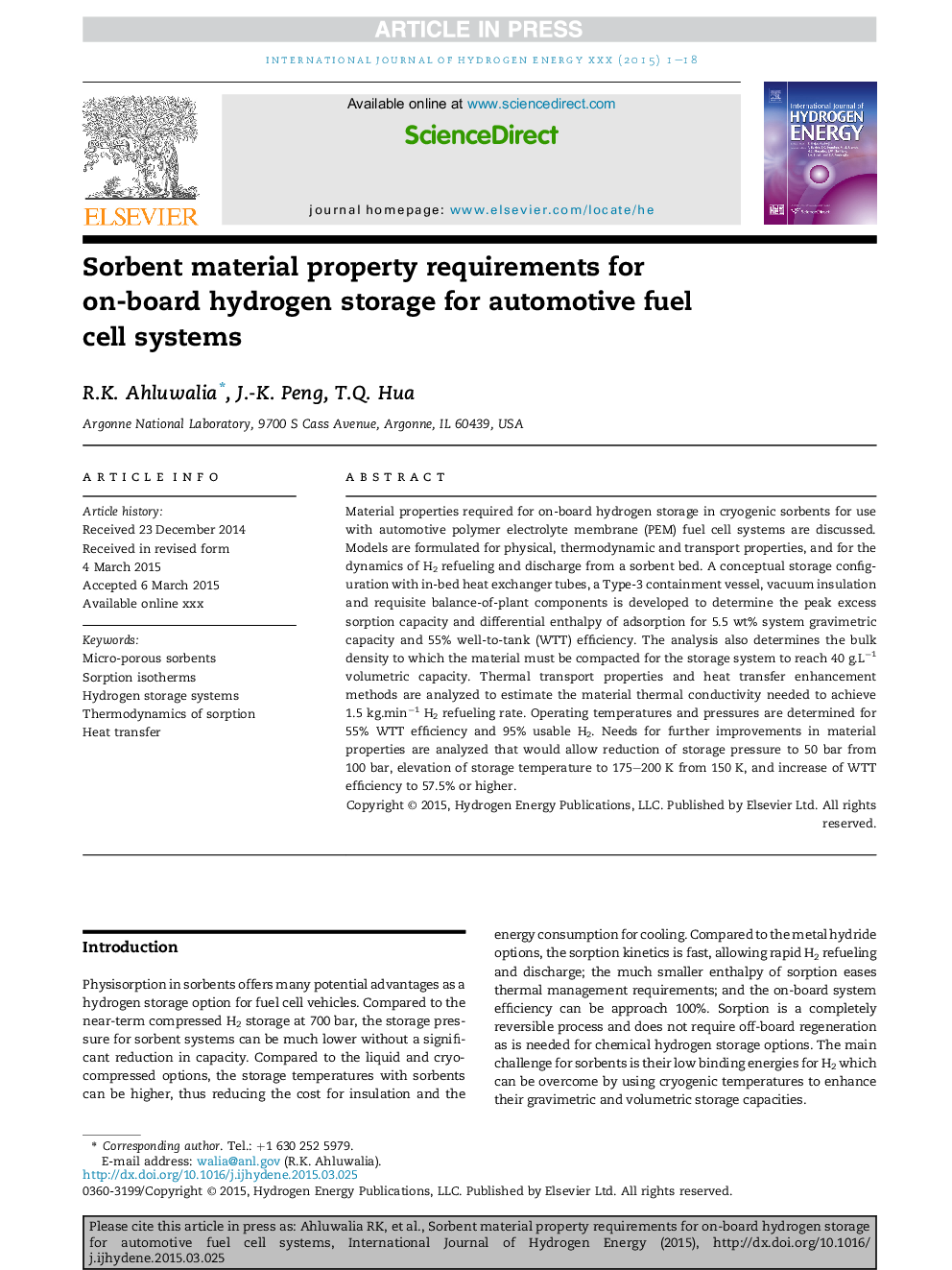| Article ID | Journal | Published Year | Pages | File Type |
|---|---|---|---|---|
| 7715522 | International Journal of Hydrogen Energy | 2015 | 18 Pages |
Abstract
Material properties required for on-board hydrogen storage in cryogenic sorbents for use with automotive polymer electrolyte membrane (PEM) fuel cell systems are discussed. Models are formulated for physical, thermodynamic and transport properties, and for the dynamics of H2 refueling and discharge from a sorbent bed. A conceptual storage configuration with in-bed heat exchanger tubes, a Type-3 containment vessel, vacuum insulation and requisite balance-of-plant components is developed to determine the peak excess sorption capacity and differential enthalpy of adsorption for 5.5Â wt% system gravimetric capacity and 55% well-to-tank (WTT) efficiency. The analysis also determines the bulk density to which the material must be compacted for the storage system to reach 40Â g.Lâ1 volumetric capacity. Thermal transport properties and heat transfer enhancement methods are analyzed to estimate the material thermal conductivity needed to achieve 1.5Â kg.minâ1 H2 refueling rate. Operating temperatures and pressures are determined for 55% WTT efficiency and 95% usable H2. Needs for further improvements in material properties are analyzed that would allow reduction of storage pressure to 50Â bar from 100Â bar, elevation of storage temperature to 175-200Â K from 150Â K, and increase of WTT efficiency to 57.5% or higher.
Related Topics
Physical Sciences and Engineering
Chemistry
Electrochemistry
Authors
R.K. Ahluwalia, J.-K. Peng, T.Q. Hua,
